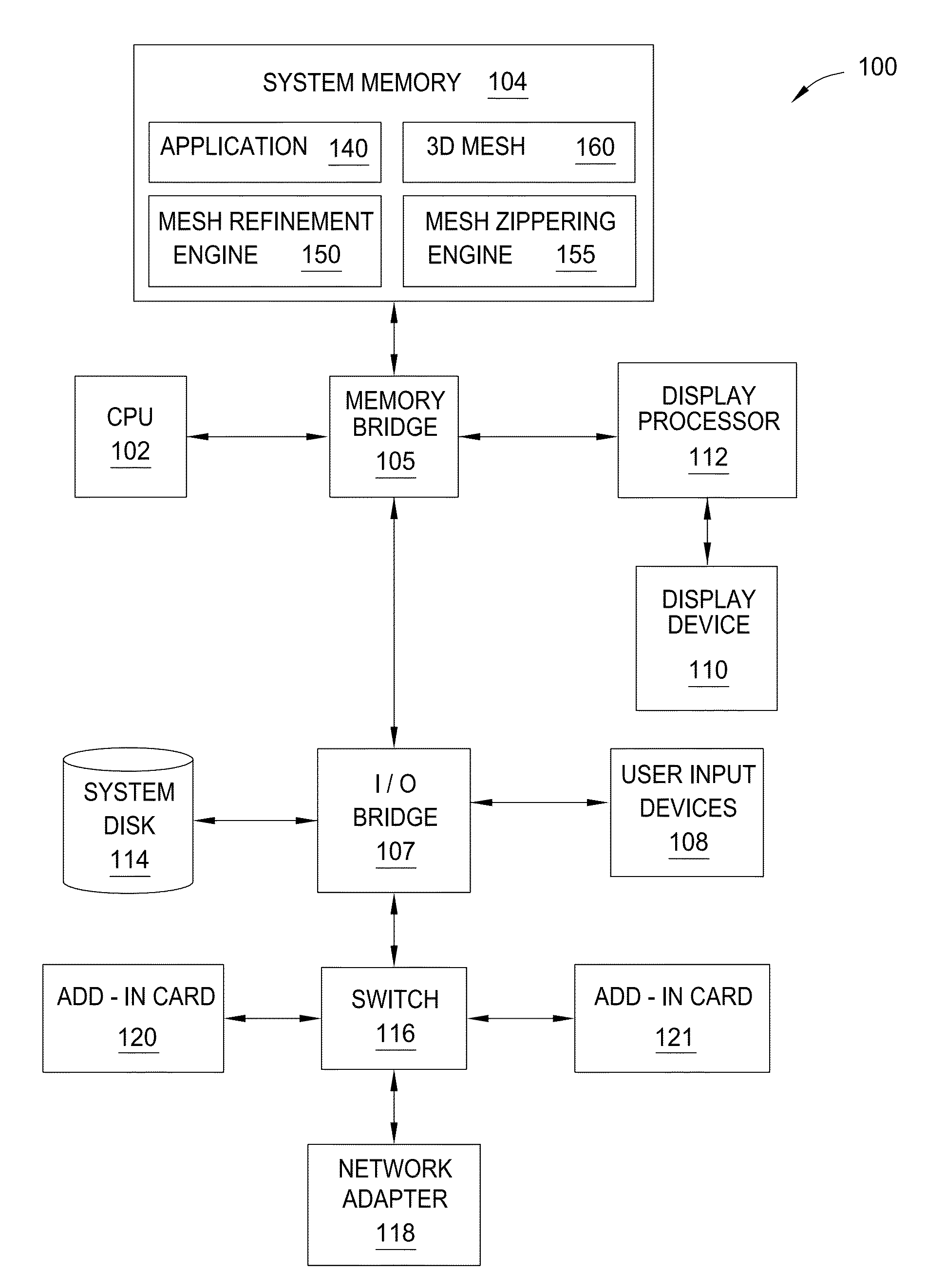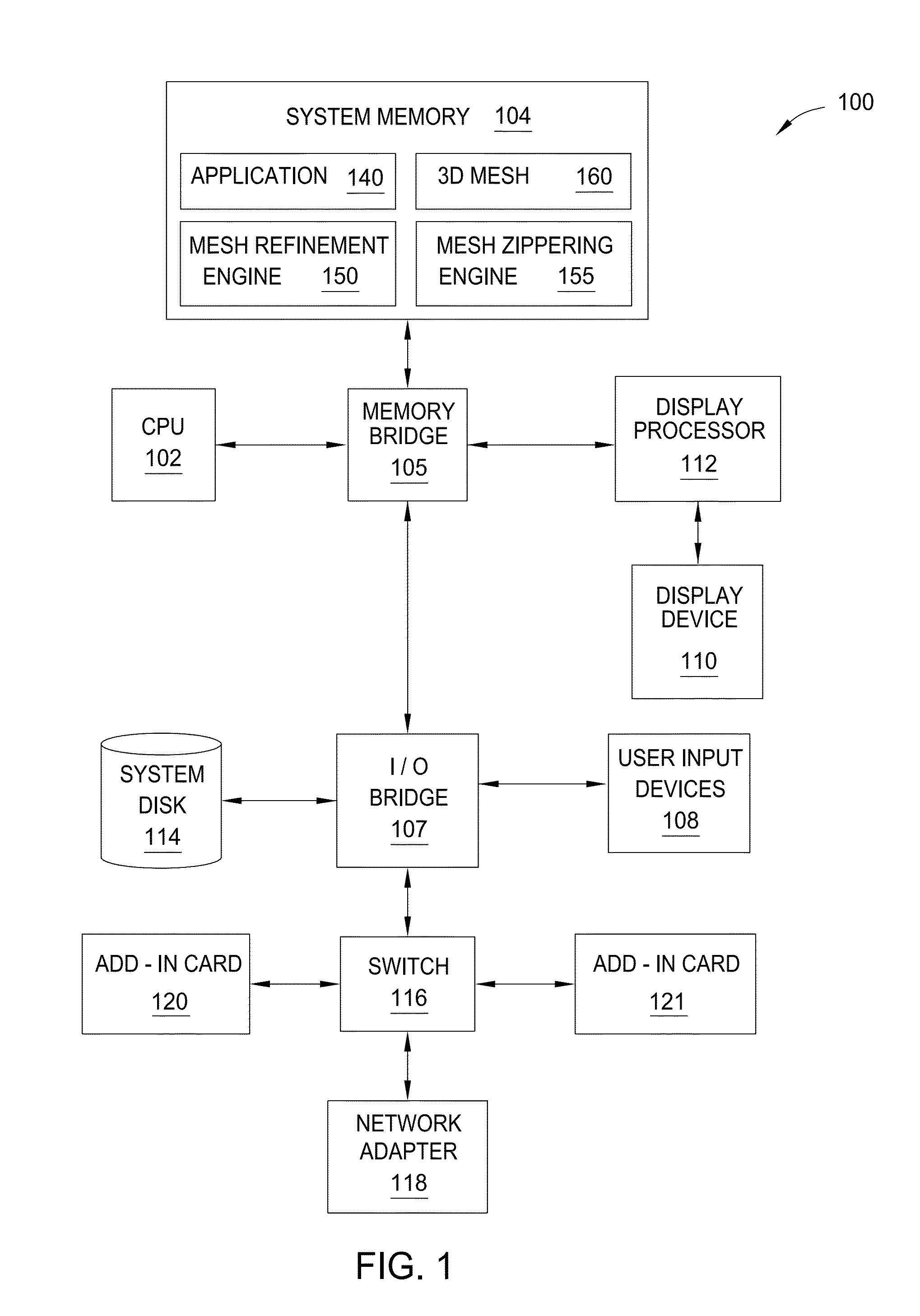Adaptively zippering meshes
a mesh and mesh technology, applied in the field of adaptive mesh zippering, can solve the problems of numerical and computational problems, conventional software applications typically are not able to produce satisfactory results, and conventional software applications introduce significant mesh distortion and irregularities, and achieve the effects of low pre-processing workload, efficient merged, and easy specification
- Summary
- Abstract
- Description
- Claims
- Application Information
AI Technical Summary
Benefits of technology
Problems solved by technology
Method used
Image
Examples
Embodiment Construction
[0024]In the following description, numerous specific details are set forth to provide a more thorough understanding of the present invention. However, it will be apparent to one of skill in the art that the present invention may be practiced without one or more of these specific details. In other instances, well-known features have not been described in order to avoid obscuring the present invention.
[0025]FIG. 1 illustrates a computing device 100 configured to implement one or more aspects of the present invention. As shown, computing device 100 includes a memory bridge 105 that connects a central processing unit (CPU) 102, an input / output (I / O) bridge 107, a system memory 104, and a display processor 112.
[0026]Computing device 100 may be a computer workstation, a personal computer, video game console, personal digital assistant, mobile phone, mobile device or any other device suitable for practicing one or more embodiments of the present invention. As shown, the central processing...
PUM
 Login to View More
Login to View More Abstract
Description
Claims
Application Information
 Login to View More
Login to View More - R&D
- Intellectual Property
- Life Sciences
- Materials
- Tech Scout
- Unparalleled Data Quality
- Higher Quality Content
- 60% Fewer Hallucinations
Browse by: Latest US Patents, China's latest patents, Technical Efficacy Thesaurus, Application Domain, Technology Topic, Popular Technical Reports.
© 2025 PatSnap. All rights reserved.Legal|Privacy policy|Modern Slavery Act Transparency Statement|Sitemap|About US| Contact US: help@patsnap.com



